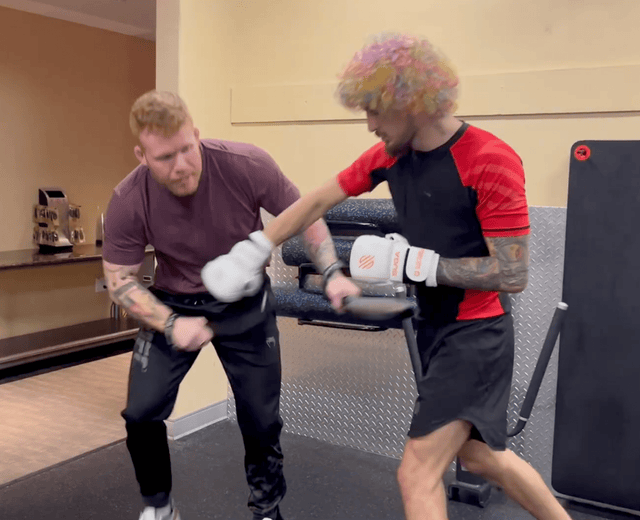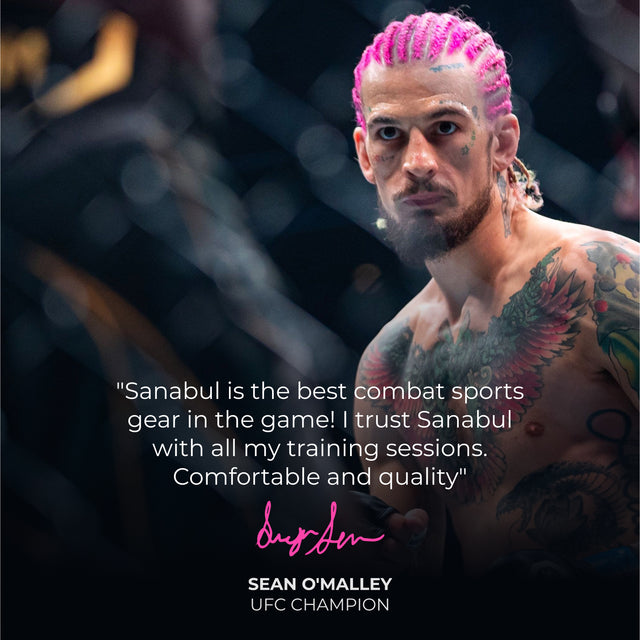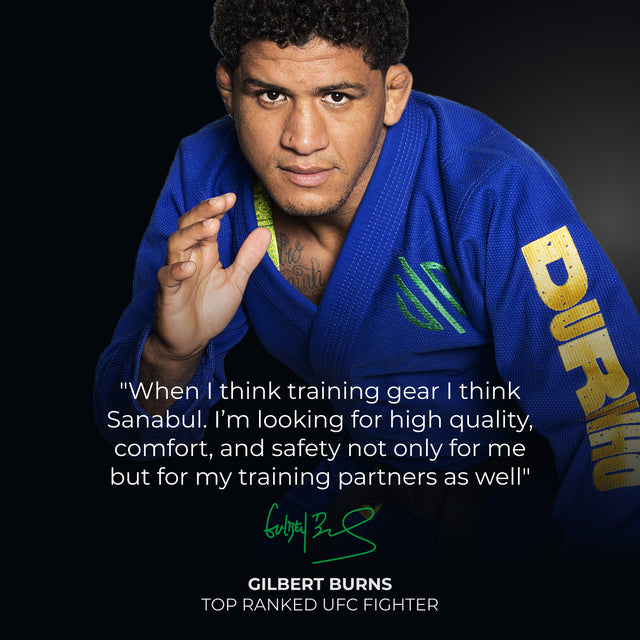Coaching Equipment for Striking
A lot of different coaching equipment exists for combat sports. If you’re new to striking combat sports like Muay Thai, kickboxing, or boxing, you may have seen coaches holding pads of different shapes and sizes.
Like many things in life, striking equipment does not have a “one size/type fits all” design. This applies to gloves, shin guards, pads, and more. Different types of pads and coaching equipment exist for specialized purposes. By using different pads, coaches can hone in and focus on a few areas where they would like to see their trainee improve in.
Here are a number of different types of pads that striking coaches use, along with the purpose behind each piece of equipment:
Focus mitts
Focus mitts have curved padding to help holders catch punchers better. The padding is usually a couple inches thick to offer adequate protection for the holder and puncher. As a whole, each focus mitt is slightly larger than a boxing glove, with the main purpose being to absorb punches.
Hitting focus mitts are great tools that coaches use to improve/maintain their trainee’s punching technique, precision (hand eye coordination), timing, power, speed, and defense.
Speed mitts
Speed mitts, like focus mitts, are mainly focused around punchers. Slightly larger than a hand, speed mitts only have a slight curve on them and have much thinner padding than focus mitts. Mainly used for combinations to develop hand speed, the mitts have to match a puncher’s speed, so they are much lighter than conventional focus mitts. Since strict power is not the focus, the padding does not need to be as thick as it is on other types of pads.
Speed mitts are used when a coach works to develop punching speed, technique, precision, timing, and defense.
Air mitts
Air mitts are usually a lighter, yet more protective type of focus mitt. There is more padding than a focus mitt, but the padding inside is softer. This allows the pad holders’ joints (elbows, shoulders,) and hands to have more protection upon impact, compared to conventional focus mitts.
This may seem a bit confusing: if the padding is softer, how does it offer more protection? When you hit a pad that is fairly solid, the force of the strike transfers right through the pad and gets absorbed by whatever the pad is connected to – in this case, the pad holder. The pad serves as a vehicle for the force to be transferred through. When the pad is thicker (with the softer material), more force will disperse throughout the interior of the padding, meaning there is comparatively less force that the pad holder will absorb on impact. Think of it like this, from both a striker’s point of view and the trainer/pad holder’s perspective: hitting a hardcover book vs hitting a thick pillow.
Thai pads
Thai pads are thick pads, running from over the holder’s hands to their elbow area. These pads are designed to absorb punches, kicks, elbows, and knees from some of the most powerful strikers in the world, so the padding is much thicker than focus mitts (which are mainly designed for punches). They are like tanks, when it comes to coaching equipment. You can’t maneuver with them as fast as you can with other pads (ex. focus mitts), but they can take a beating and still hold up fine.
Thai pads are designed for trainers to develop the following in their trainee’s punches, kicks, elbows, and knees: technique, precision, timing, power, speed, and endurance.
Paddles
Striking paddles are like ping pong… well, paddles, only they have a longer handle. The longer handle is for the holder’s protection (or prevention) from injury. The round part at the end of the handle is what is punched/kicked. Since the paddles have extremely thin padding, strikes will go right through the paddle as it bends back, so keeping the area behind it is ideal when using. The handle allows it to be held in a way where nothing is close behind it during impact, which also allows nothing to take the full impact of the incoming strike.
Striking paddles are used to develop technique, precision, timing, speed, and distance management.
A unique benefit of hitting striking paddles is that they allow trainees to train without fear of injuries to their bodies. Since there is little to no resistance coming back from the holder upon impact (as there is with punching mitts and Thai pads), the joints do not absorb the jarring force/shock from each strike. There is a tradeoff here, however. While you receive less impact on each strike due to the lack of resistance, your muscles may also not be getting the endurance/durability it needs from impact. Having the power from your strikes only going one way (through the paddles) can be really helpful when training with soreness or an injury, but this can also prevent your body from developing/strengthening the necessary supporting muscles needed to stabilize everything on striking impact. Coaches and practitioners should find a balance between pads that offer resistance and don’t offer resistance, to balance injury prevention and supporting muscle stabilization/endurance.
Striking sticks
Striking sticks vary in their shape, size, and material. Some coaches use hollow pool noodles, while some use stuffed pool noodles. Other trainers use striking sticks that are much smaller, but more firm. Regardless of preference, striking sticks are very similar to paddles, in their injury prevention/mitigation abilities when training. Easier on the joints than conventional pads, the strikes’ power only goes through the sticks and the striker will not have to deal with the jamming force upon impact.
Striking paddles are used to develop technique, precision, timing, speed, defense, and distance management.
Round punch pad (donut pad)
Also known as a round punch shield, this pad is thick and is packed with a lot of padding inside. Handles on the side of this round target make it easier on the holder to quickly switch up the location and angle that the pad is held at, to train the striker to be powerful C
Punch shields are designed for developing punching power and speed.
Body protector
Body protectors… protect the body. Shocking, right? In all seriousness, these pads wrap around the entire torso of the wearer, even going as far as the lower back. It looks and is worn similar to a tank top, only it's much, much bulkier. The padding is very thick, allowing the wearer to absorb impact from punches, kicks, and knees. While strikes are absorbed to this body protector without any pads in front, many trainers opt to use this with other types of pads, like focus mitts and Thai pads. They hold the pads normally for strikes not going to the body and simply brace for impact on body shots, giving the striker a more realistic feel of what it will be like in a fight.
Body protectors are designed for developing the following for punches, kicks, and knees: technique, precision, timing, power, speed, endurance, and distance management.
Belly pad
Belly pads do the same exact thing that a body protector does, only it covers half of what the body protector does. A belly pad is worn around the waist, like a champion would wear their championship belt. This pad is also thick and most of the time is used along with Thai pads. When wearing the belly pad and holding Thai pads, the coach will catch kicks/knees with the Thai pad and belly pad, distributing the force from the kick equally and giving the striker a realistic feel on what a fight will be like.
Belly pads are designed for developing the following for punches, kicks, and knees: technique, precision, timing, power, speed, endurance, and distance management.
Low kick pad (thigh pad, suitcase pad)
Low kick pads come in a variety of styles. There are some that you can strap around a leg, which provides protection to the outside, inside, and front of the wearer’s leg (thigh pad). There are others that are just a thick square pad with a handle (suitcase pad). The holder will position the pad to rest on the outside of their leg and lean into a kick to absorb the impact. Different design, same purpose: absorbing impact from low kicks. These pads are incredibly thick (some even 2-3 times the thickness of Thai pads) to be able to handle the impact from these quick and powerful strikes.
Low kick pads are designed for practitioners to work on the precision, power, technique, timing, and speed of their low kicks, while giving the person holding/wearing it more than enough protection to avoid injury
Kick/striking shield
Kick shields, also known as striking shields, can provide protection from a variety of different strikes: punches, kicks, elbows, knees. This shield of padding can be used in a variety of different positions too: standing up, on the ground (ground and pound), against a cage/wall, moving around. It’s pretty much a big pad that you would hold like you do a shield (or how law enforcement hold riot shields)
Striking shields are designed for developing power, speed, endurance, and distance management.
We offer a lot of different coaching equipment, listed below:
Focus Mitts
Air Mitts
Micro mitts (hybrid pads, designed to handle both speed and power work)
Thai pads
Striking paddles
Striking sticks
Body protector
Striking shield
You can check them out here
Thank you for reading - we hope this article gave a helpful description of the many types of pads and coaching equipment used in the striking world!





0 Comments
There are no comments for this article. Be the first one to leave a message!